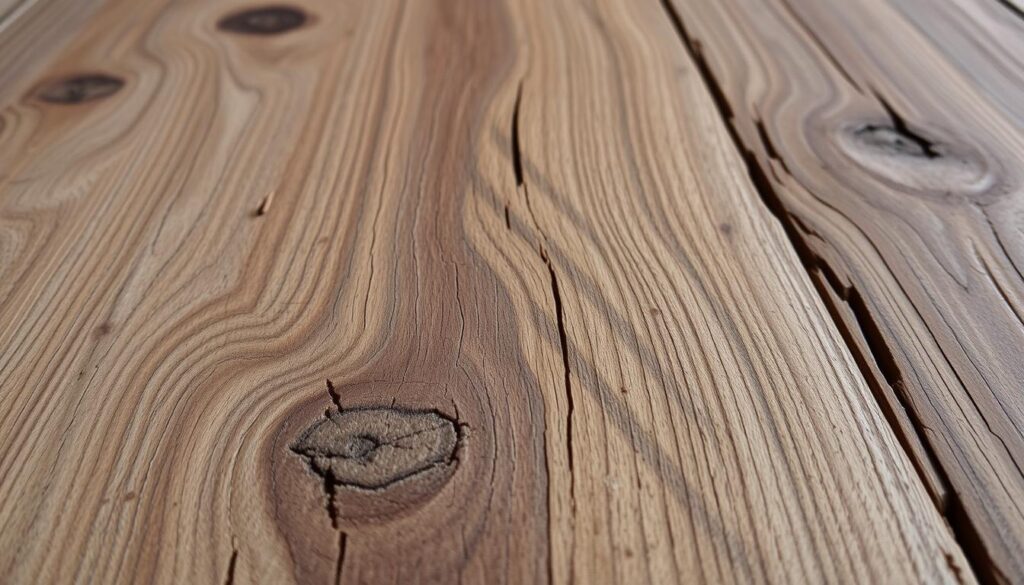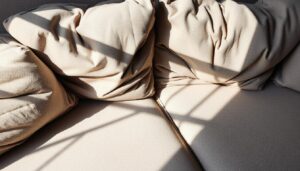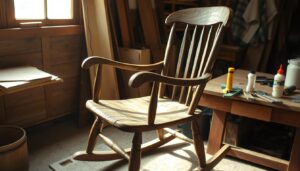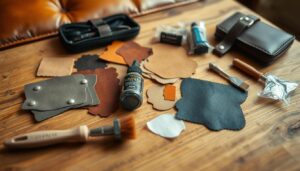Are you tired of seeing unsightly water marks and stains on your beloved oak table? Oak is a natural material prized for its durability and beauty, but it’s not immune to damage. The visible grain of oak can sometimes hide minor marks, but more pronounced stains can be a real eyesore.
Restoring your furniture to its former glory requires understanding the type of stains you’re dealing with and how to treat them effectively. Whether it’s a water ring, heat mark, or general discolouration, the right approach can make all the difference in maintaining the integrity and aesthetic appeal of your wood surface.
Key Takeaways
- Effective methods for identifying different types of stains on oak surfaces.
- Professional and DIY approaches to treating and preventing stains.
- Techniques to maintain the natural beauty and integrity of your oak furniture.
- Tips on restoring your oak table to extend its lifespan.
- Understanding the importance of proper care for your wooden furniture.
Understanding Oak Wood and Its Vulnerability to Stains
Oak, a popular choice for furniture, has properties that render it vulnerable to stains. The open grain pattern and porous nature of oak wood make it particularly susceptible to absorbing liquids.
Properties of Oak That Make It Susceptible to Staining
The natural characteristics of oak wood contribute to its vulnerability. Its porous structure allows liquids to penetrate deeply, causing stubborn stains. The reaction of oak’s natural tannins with moisture and chemicals often results in dark spots or discolouration.
Common Types of Damage on Oak Table Tops
Common damage types include water rings, heat marks, dark stains from spills, and general discolouration from UV exposure. The protective finish on oak furniture can deteriorate, leaving the wood more susceptible to damage. Understanding these factors helps in selecting the right treatment method.
Essential Tools and Materials for Oak Table Restoration
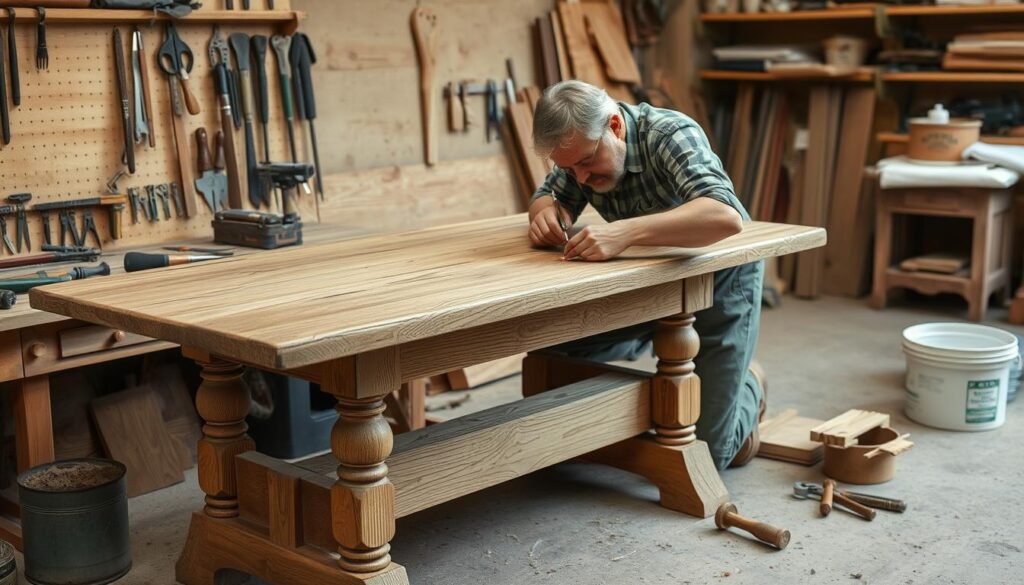
To restore your oak table effectively, you’ll need to gather essential supplies. Most oak furniture is coated with a protective layer of bee’s wax or oil, which needs to be maintained.
Cleaning and Preparation Supplies
For effective oak table restoration, gather soft, lint-free cloths for cleaning and applying treatments without scratching the surface. Essential cleaning supplies include mild dish soap, white vinegar, and distilled water.
Stain Removal Products
Products for stain removal vary based on the type of stain: mayonnaise for water rings, baking soda for dark stains, and specialised wood cleaners for stubborn marks.
Refinishing Materials
Sandpaper (180-220 grit), wood oil or wax appropriate for oak, and application pads or brushes are necessary for refinishing.
Preparing Your Oak Table for Stain Treatment
Before you start removing stains from your oak table, it’s essential to prepare the surface properly. This involves a thorough cleaning to remove dirt and grime.
Thorough Cleaning to Remove Surface Dirt
Begin by cleaning your oak table with a slightly damp cloth, wiping in the direction of the wood grain. This helps prevent pushing dirt deeper into the porous oak structure. After wiping, make sure to dry the surface with a soft, clean cloth.
Assessing the Depth and Type of Stains
Carefully assess each stain to determine its type and depth. This will dictate the appropriate treatment method.
Testing Products on Inconspicuous Areas
Before applying any stain removal product, test it on an inconspicuous area to ensure it won’t cause discolouration or damage.

Removing Water Stains and Rings from Oak
Removing water stains from oak furniture is easier than you think, using household items. Water stains and rings are common issues on oak tables, appearing as white or cloudy marks where moisture has penetrated the finish.
The Mayonnaise Method
One effective technique is the mayonnaise method. Simply apply a thin layer of mayonnaise to the affected area, leave it for 30 minutes to overnight, and then wipe away with a clean cloth. The oil in mayonnaise displaces the trapped moisture, helping to remove the stain over time.
Using Toothpaste and Baking Soda
For stubborn water rings, create a gentle abrasive paste using toothpaste mixed with baking soda. Rub it into the stain using circular motions with a soft cloth.
Heat-Based Techniques
Alternatively, heat-based techniques involve placing a clean, dry cloth over the water stain and applying a warm iron for a few seconds at a time, helping to evaporate the trapped moisture.
After removing water stains, allow your oak table to dry completely before applying a thin layer of appropriate wood polish or oil to restore the finish and protect against future damage.
Effective Stain Repair on Oak Table Top Methods
When it comes to removing stains from your oak table top, the right techniques can make all the difference. A darker stain generally indicates a greater level of damage, requiring more intensive treatment methods.
Treating Dark Stains and Discolouration
Dark stains on oak indicate deeper penetration of liquids or chemical reactions with the wood’s tannins. For treating dark stains and discolouration, a mixture of hydrogen peroxide and water can act as a mild bleaching agent. Apply the solution with a cloth, let it sit for 10 minutes, then rinse and dry thoroughly.
Addressing Heat Marks and Burns
Heat marks and burns damage the finish and sometimes the wood itself. These can be treated with a mixture of cigarette ash and vegetable oil rubbed gently into the affected area with a soft cloth.
Removing Ink, Wine and Chemical Stains
Ink, wine, and chemical stains often respond well to a paste made from salt and lemon juice. Apply the paste to the stain and leave it for several hours before wiping away. For more information on restoring damaged oak tables, you can visit Cambridge Traditional Products.
As stated by experts, “Never put anything hot directly onto an oak surface, as it will leave dark stains on the wood which are difficult to remove.” By following these methods, you can effectively repair stains on your oak table top and maintain its surface.
Natural DIY Solutions for Oak Restoration
To restore your oak furniture without harsh chemicals, consider using natural DIY solutions. These methods are not only effective but also environmentally friendly.
Vinegar and Olive Oil Mixture
A traditional way to clean your oak furniture is by using a mixture of vinegar and olive oil. Combine one part white vinegar with three parts olive oil, and apply it thinly to the surface using a soft cloth. Rub it gently into the grain. The olive oil moisturises the wood, while the vinegar provides gentle cleaning properties.
Lemon Juice for Natural Bleaching
Lemon juice can act as a natural bleaching agent to lighten dark stains on your oak table top. Apply fresh lemon juice directly to the stain, leave it for 10-15 minutes, and then wipe away and neutralise with water.
Tea and Coffee Grounds for Colour Matching
For areas where the oak colour has faded, strong brewed tea or coffee can be used to darken the wood and match the surrounding areas. Test carefully to achieve the right shade. You can also use coffee grounds mixed with a small amount of water to fill in small scratches in dark oak.
- Natural and effective: These DIY solutions are free from harsh chemicals, making them safe for your family and the environment.
- Easy to apply: Simply mix the ingredients, apply them to the affected area, and gently rub them in.
Sanding and Refinishing Severely Damaged Areas
When your oak table top suffers from severe damage, sanding and refinishing are crucial steps in restoring its original beauty. This process not only removes deep stains but also revitalises the wood’s appearance.
When Sanding Is Necessary
Sanding becomes necessary when stains have penetrated deeply into the wood or when the finish has been severely damaged beyond what surface treatments can repair.
Step-by-Step Sanding Process
Begin with a thorough cleaning of the table, then use fine-grit sandpaper (180-220 grit) and always sand in the direction of the wood grain to avoid creating cross-grain scratches. For severely damaged areas, start with a medium-grit sandpaper (120 grit) before progressing to finer grits.
| Grit Size | Purpose | Effect on Surface |
|---|---|---|
| 120 | Coarse sanding for severely damaged areas | Removes deep stains and old finish |
| 180-220 | Fine sanding for smoothing the surface | Prepares the surface for new finish |
Applying New Finish After Stain Removal
After sanding, remove all dust with a tack cloth before applying a new finish. This is crucial as any remaining particles will create an uneven surface.
Oil Finishes vs. Wax Finishes
When choosing between oil finishes (which penetrate the wood and enhance grain) and wax finishes (which sit on the surface and provide a soft sheen), consider both the original finish and your desired level of protection and appearance. Oil finishes offer a more durable coat, while wax finishes provide a easy-to-apply protective layer.
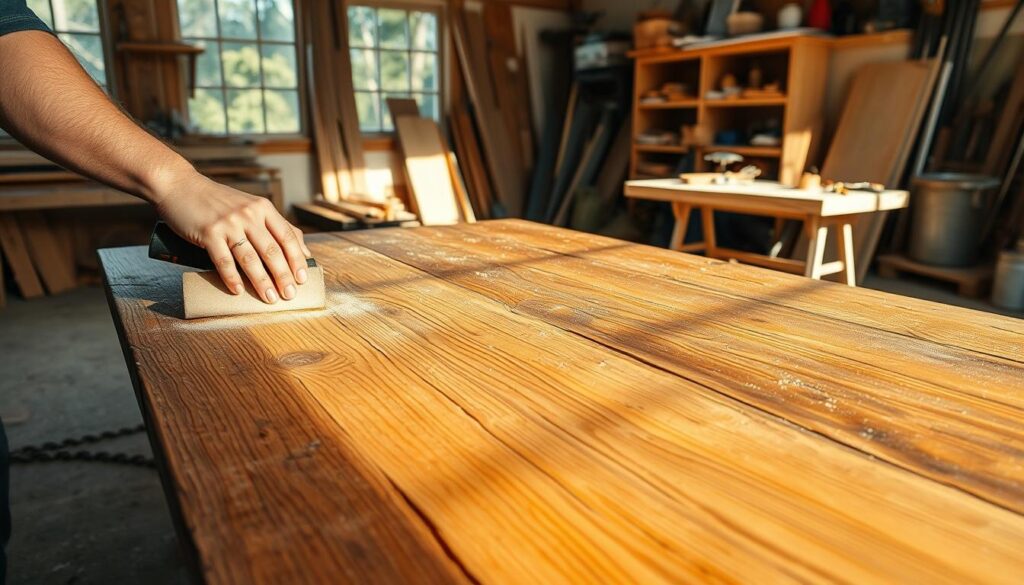
Maintaining Your Restored Oak Table
Maintaining your restored oak table requires attention to detail and a few simple practices. To keep your oak furniture in good condition, it’s essential to consider its placement and daily care.
Proper Placement
Place your oak table away from direct sunlight, radiators, and air conditioning vents to prevent damage from extreme temperatures and humidity fluctuations. Avoid positioning it near damp walls or in basements, as this can cause warping.
Daily Care and Cleaning Practices
For daily cleaning, use a slightly damp cloth followed by a dry cloth to wipe away any spills or dust. Avoid using commercial furniture sprays or polishes, as they can build up over time and damage the finish. Learn more about cleaning oak furniture.
Seasonal Maintenance Schedule
Make sure to use coasters, placemats, and trivets consistently to protect the surface from water rings, heat marks, and scratches. Develop a seasonal maintenance schedule that includes a thorough inspection and gentle cleaning in spring and autumn, with a light application of appropriate wood oil or wax once or twice a year.
Conclusion: Enjoying Your Beautifully Restored Oak Table
Your oak table, once marred by stains, can now shine with its original beauty restored. With proper restoration and ongoing maintenance, your oak table can remain a beautiful centrepiece in your home for generations. To keep it looking its best, remember to use coasters for drinks and placemats for dining, and always wipe away spills immediately to prevent new stains from forming.
By following the tips outlined in this article, you can enjoy a beautifully restored oak table that combines timeless elegance with practical durability, enhancing the warmth and character of your dining or living space.
